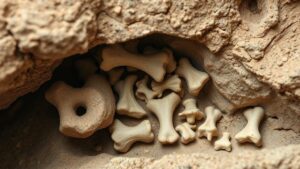Techniques for Dealing With Collapse Traps in Multi-Layered Treasure Vaults
Techniques for Dealing With Collapse Traps in Multi-Layered Treasure Vaults
In the realm of treasure hunting and archaeological exploration, multi-layered treasure vaults pose a unique and perilous challenge. Among these are the infamous collapse traps designed to protect valuable treasures from intruders. Understanding and effectively dealing with these traps is essential for both safety and successful excavation. This article delves into various techniques and strategies for navigating and neutralizing collapse traps within multi-layered vault systems.
Understanding Collapse Traps
Collapse traps are sophisticated mechanisms intended to trigger structural failures within a vault, often leading to the entrapment of unauthorized individuals. These traps may range from simple gravitational falls to complex systems utilizing counterweights and triggering devices. Examples include:
- Weighted ceilings that drop when a pressure plate is pressed.
- Pitfalls that open when certain conditions are met, such as the removal of an object from a shelf.
To deal effectively with such systems, it is critical to identify the underlying mechanics of the trap. This involves a careful examination of the vaults architecture and any accompanying artifacts that may contain clues.
Preliminary Reconnaissance
A successful approach to collapse traps begins with thorough reconnaissance. This stage includes:
- Visual Inspection: Observing for any signs of wear, structural integrity, or hidden mechanisms.
- Technical Scanning: Utilization of modern tools such as ground-penetrating radar (GPR) to identify voids and structural anomalies.
For example, an archaeological team studying an ancient Egyptian tomb employed GPR technology to identify collapsed ceilings and voids behind walls before physically entering the space. This proactive measure allowed them to devise a safer entry strategy.
Analyzing Historical Context
Understanding the historical context of the vault can provide insights into the types of traps likely employed. Ancient civilizations often had distinct styles of construction and protection mechanisms. Through research of archaeological records and previous site excavations, one may ascertain the likely configuration and potential traps within a new location.
For example, in Mesopotamian treasure vaults, builders commonly used collapsing ceilings in response to unauthorized access attempts. Knowing this can inform explorers about the likelihood of encountering similar mechanisms in a multi-layered vault in that region.
Physical Manipulation Techniques
Once traps are identified, physical manipulation techniques can be deployed to either disarm or safely bypass them. Some effective methods include:
- Counterweight Adjustments: Carefully redistributing weight on mechanisms to prevent triggering.
- Support Reinforcements: Employing temporary supports to stabilize structures before entering.
In one documented case, a team in Central America utilized wooden beams as temporary supports in a Mayan pyramids upper chambers. By preventing potential collapse, they successfully accessed the valuable artifacts below without triggering traps.
Utilizing Remote Devices
As technology advances, so does the ability to interact with potential traps from a distance. Remote-operated cameras and robotic tools equipped with sensors can be employed to evaluate conditions before direct human interaction. This method proves invaluable for:
- Minimizing risk to human life.
- Providing real-time data about structural integrity.
An archaeological expedition in Italy utilized drone technology to survey a subterranean vault that was thought to be laden with collapse traps. The drones sensors highlighted unstable areas and guided the team to safer zones for excavation.
Training and Team Coordination
Preparation and training are paramount when tackling any form of collapse trap. Ensuring all team members are knowledgeable about collapse indicators and emergency protocols is essential. Also, maintaining clear communication is critical.
Organizations such as the Society for Historical Archaeology emphasize the importance of safety drills and workshops focused on dealing with collapse traps in their training modules, promoting best practices in excavation techniques.
Conclusion: Navigating Multi-Layered Vaults Safely
Dealing with collapse traps in multi-layered treasure vaults is a multifaceted challenge that requires a combination of historical insight, technology, physical techniques, and rigorous training. By employing strong reconnaissance methods, understanding historical contexts, manipulating mechanisms safely, and using advanced remote technologies, treasure hunters and archaeologists can significantly enhance their safety and success rates when navigating these treacherous environments.
In executing these strategies, adventurers must continue to prioritize safety and sustainability, ensuring that historical sites are protected for future research and exploration.

